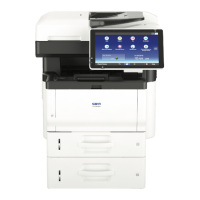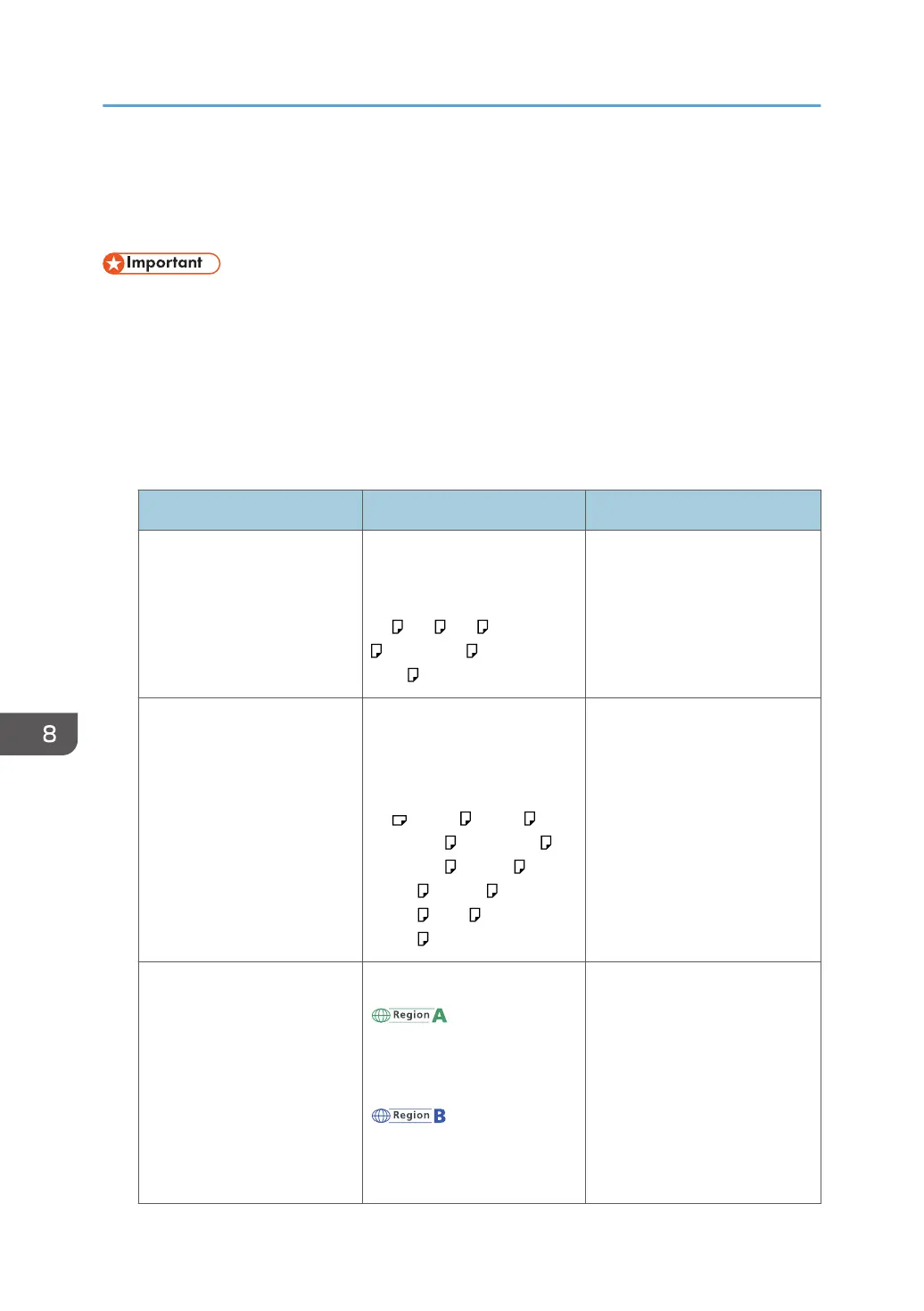Recommended Paper
This section describes recommended paper sizes and types.
• If you use paper that curls, either because it is too dry or too damp, a staple clogging or paper jam
may occur.
• Do not use paper designed for inkjet printers, as these may stick to the fusing unit and cause a
misfeed.
• When you load OHP transparencies, check the front and back of the sheets, and place them
correctly, or a misfeed might occur.
Tray 1
Paper type and weight Paper size Paper capacity
52-220 g/m
2
(14 lb. Bond -
80 lb. Cover)
Thin Paper–Thick Paper 3
Select the paper size using
the paper size dial on the
tray*1:
A4 , A5 , A6 , 8
1
/
2
× 14
, 8
1
/
2
× 11 , 5
1
/
2
×
8
1
/
2
550 sheets
(When using Plain Paper 1)
52-220 g/m
2
(14 lb. Bond -
80 lb. Cover)
Thin Paper–Thick Paper 3
Set the paper size dial on the
tray to "Asterisk", and select
the paper size with the control
panel:
A5 , B5 JIS , B6 JIS ,
8
1
/
2
× 13 , 8
1
/
4
× 14 ,
8
1
/
4
× 13 , 8 × 13 , 8 ×
10
1
/
2
, 8 × 10 , 7
1
/
4
×
10
1
/
2
, 16K , 8
1
/
2
×
13
2
/
5
550 sheets
(When using Plain Paper 1)
52-220 g/m
2
(14 lb. Bond -
80 lb. Cover)
Thin Paper–Thick Paper 3
Custom size:
Vertical: 148.0–356.0 mm
Horizontal: 82.5–216.0 mm
Vertical: 5.83–14.01 inches
Horizontal: 3.25–8.50 inches
550 sheets
(When using Plain Paper 1)
8. Adding Paper and Toner
186

